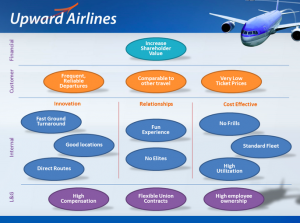Learn to strategically select AI tools for your marketing’s success and discover top LLMs driving the industry.

I’ve been writing about marketing tools for over a decade, and some of my earliest published articles were about the new breed of social media monitoring tools. Looking at those pieces today, two insights struck me:
- The basic approach and strategy of selecting technology tools to help us with marketing tasks hasn’t changed much (the good news).
- Everything else has changed dramatically (the not-so-good news).
Instead of creating a list of hundreds of AI marketing tools that may (or may not) be around in a few months, I hope to arm you with the foundational knowledge to select AI tools strategically well into the future. I’ll start with what hasn’t changed and provide an overview of what I consider a strategic approach to AI tool selection.
Once the basics are out of the way, I’ll provide my thoughts on how these new AI tools are total disrupters and explain the large language model (LLM) and app ecosystem. Finally, I’ll conclude with a guide to the most popular and powerful AI models available today, along with my short list of AI marketing tools worth paying for.
A strategic approach
I recommend answering the following questions before investing in any AI tools:
- Identify the opportunity. What does your business need to do with AI? Which marketing tasks could benefit from the help of AI tools?
- Available resources. What’s your budget?
- Target users. Which roles within your organization work on the tasks identified and who needs access to the AI tools?
- KPIs. How will you measure the success of your AI tools to positively impact the completion of these tasks?
- Support. What type of customer support are you looking for?
- Integrations. Do you need your AI tool to integrate with other tools like your CRM, CMS, Google Analytics, etc.?
- Desired outputs. Do the results need to be exportable? In which formats?
- Historical data. How long do you need to archive the information?
Thoughtfully answering these questions will set you and your team up for success when selecting the best approach to your AI toolset. For a more in-depth approach to building an AI strategy, check out my article, “Decoding generative AI: How to build a basic genAI strategy for your marketing organization.”
LLMs and the app ecosystem they support
Back in the good old days, dozens of social media listening tools sprung up in hopes of helping marketers tackle the challenge of social media marketing. The market was relatively stable for years, and one of the tools I wrote about in 2013 is still around today.
However, many of the best third-party tools were eventually acquired by companies like Adobe and Salesforce, which were eager to build a “one and done” martech stack for their clients. The sad reality was that most of those new tools didn’t survive.
Today, instead of dozens of third-party AI tools or apps, there are thousands, with more cropping up daily. I predict many of these won’t be around long, but there is one thing most have in common: the underlying LLM that powers their capabilities.


For this reason, I advise marketers to interface directly with these powerful models and cut out the middleman. I repeatedly get much better results when I go directly to ChatGPT (one of the most popular and powerful LLMs available) with a thoughtful prompt instead of paying for a third-party tool.
The one exception would be proprietary AI tools that output visuals and text specifically for marketing purposes. These third-party tools comprise the core of my AI tool shortlist. While they are immensely helpful, their lifespan is likely limited as their capabilities will eventually be integrated (or acquired) into tools we already use.
One and done? A comparison of major LLMs
If I had to choose only one AI tool, it would be OpenAI’s ChatGPT. It houses one of the best conversational AI models, one of the best image generators (DALL-E 3) and a ground-breaking video generation tool called SORA. A close second would be Microsoft’s Copilot which is built using OpenAI’s technology.
However, the AI landscape is shifting rapidly, and other LLMs are hot on the heels of OpenAI and ChatGPT. Below, I outline the major LLMs on the market, their primary uses and the pricing information available.
1. OpenAI GPT Models: ChatGPT 3.5 vs. 4.0
- Variants: Ada, Babbage, Curie, Davinci.
- Capabilities:
- ChatGPT 3.5 and 4.0: Advanced conversational abilities based on datasets up to September 2021.
- Cost: OpenAI offers subscription plans through the ChatGPT Plus service, which costs $ 20 per month. This provides general usage priority, including faster response times and priority access to new features and improvements.
- Use cases: Enhanced conversational agents, sophisticated content generation and educational applications.
- Learn more: OpenAI pricing
2. Google Gemini Models
- Capabilities: Handles text, image and audio data, with advanced reasoning and multimodal integration.
- Cost: Google does not publicly list specific subscription pricing for Gemini models, as access tends to be bespoke and integrated within Google Cloud services.
- Use cases: Advanced research, complex reasoning and multimodal applications.
- Learn more: Google Cloud.
3. Amazon Q
- Capabilities: Optimized for use within AWS, leveraging 17 years of AWS data. If you sell on Amazon, you are likely already seeing advanced AI capabilities built into the platform.
- Cost: Amazon Q’s pricing details are not widely published as it integrates deeply with AWS services. Costs are likely based on usage and the AWS infrastructure utilized.
- Use cases: Enterprise systems, AWS optimization.
- Learn more: AWS AI Services.
5. Anthropic Claude
- Capabilities: Designed for safety and scalability, focusing on generating truthful content.
- Cost: Anthropic does not publicly list specific subscription pricing; access is typically part of a tailored enterprise agreement.
- Use cases: Content moderation, safer internet interactions.
- Learn more: Anthropic.
6. Meta LLaMA
- Capabilities: Advanced natural language understanding and generation.
- Cost: Open-source, available for research use without commercial restrictions, unlike its predecessors.
- Use cases: Research, education, potentially integrating into consumer products for language tasks.
- Learn more: Meta AI.
My shortlist and third-party apps
Once you establish a direct relationship with your preferred LLM, it may be time to consider which specialty apps might be worth the investment. This depends on the task you want the AI machine to complete. (See the “Strategic approach” section above.) But I do have a few questions to answer when considering any third-party AI tool:
- Which LLM does the tool use? Often, this isn’t publicly available, but you can always ask.
- Are the results as good as ChatGPT and/or Copilot? If the tool only outputs text, compare the results side-by-side.
- What is the knowledge level of the tool user? These apps can be a great fit for those who aren’t tech-savvy and need a simple solution for a specific task.
After months of evaluating many of the third-party AI tools available and spending countless dollars on monthly subscriptions, here’s the list of tools that I’m still paying for:
- OpenAI Pro ($ 20 monthly): Used for most text-based projects.
- Copilot Pro ($ 20 monthly): Used for text and image combo projects.
- Canva ($ 15 monthly): Used for comped images that require specific text overlay.
- AIPRM Pro ($ 30 monthly): Used to store my own prompts and GPT’s, allowing me to share them with specific teams.
While not on my list, I want to mention a few tools I would use if my current role required them.
- AdCreative.ai: This tool does a phenomenal job crafting visuals and text for digital ads. If you need to build an endless supply of fresh digital ad content, this platform will save you a ton of time and perhaps even improve campaign results.
- GlossAI.co: This platform helps you craft video shorts, ebooks, blog posts, and carousels from your long-form video content. The tool uses AI to craft chapters, key moments and even a sizzle reel for any long-form video. You can instantly add captions, stickers, animated elements and audio tracks, then download the final version as an MP4. This tool is a must-have for teams with hours and hours of talking head videos, event videos, live stream content and dry educational footage they need to tease on social media. I have used this tool to help create my AI Marketing Revolution Challenge on YouTube, which has saved many editing hours.
Use AI or die?
Eventually, all our standard marketing tools will house AI capabilities. I firmly believe all businesses need to leverage AI for their purposes and to enhance their offerings to customers and employees. If they stand on the sidelines too long, they will eventually become completely irrelevant.
The same can be said for us merry marketers, we’re only as good as our tools. Trying to work without the help of AI is like trying to build a house without power tools. You might get there, but it’ll take you a lot longer and the result will be questionable.
While we rely on our tools, it’s up to us to use them wisely. AI is simply a knowledge machine, and there’s an enormous difference between knowledge and wisdom. As humans, we bring the wisdom.
This is the 7th article in a series about how generative AI is changing marketing.
The post Decoding generative AI: Top LLMs and the app ecosystems they support appeared first on MarTech.
(16)








